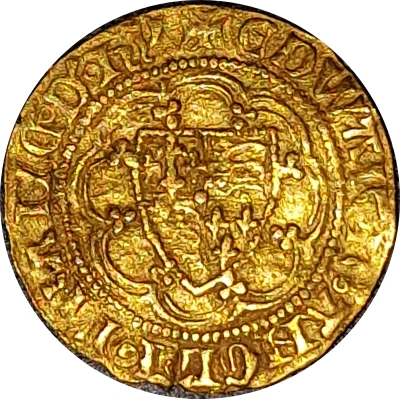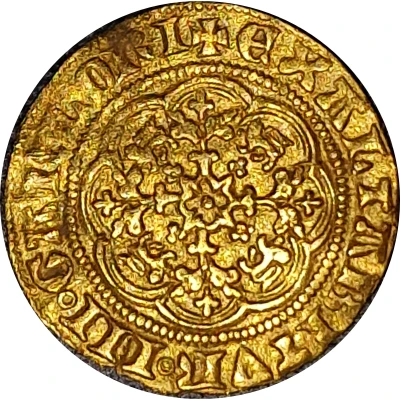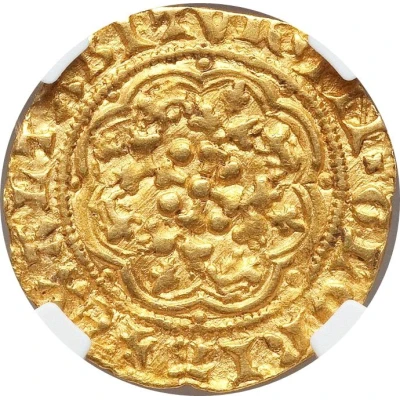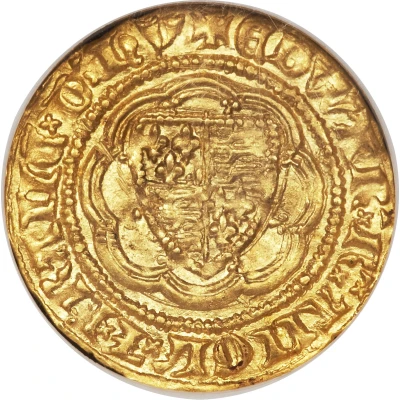
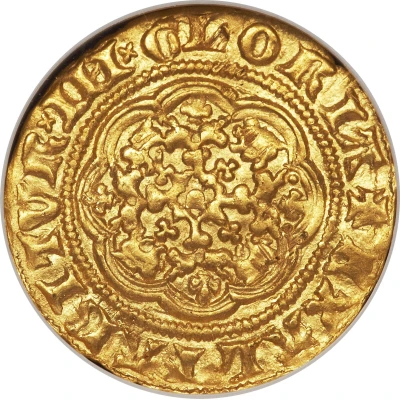

© Heritage Auctions
¼ Noble - Edward III Pre-treaty period; class G ND
| Gold | 1.64 g | 17.73 mm |
| Issuer | England (United Kingdom, British Overseas Territories and Crown Dependencies) |
|---|---|
| King | Edward III (1327-1377) |
| Type | Standard circulation coin |
| Years | 1356-1361 |
| Value | ¼ Noble (1⁄12) |
| Currency | Pound sterling (1158-1970) |
| Composition | Gold |
| Weight | 1.64 g |
| Diameter | 17.73 mm |
| Shape | Round (irregular) |
| Technique | Hammered |
| Demonetized | Yes |
| Updated | 2024-10-08 |
| Numista | N#33164 |
|---|---|
| Rarity index | 94% |
Reverse
Noble in centre of Royal Cross within tressure, lions in angles, legend around.
Script: Latin (uncial)
Lettering: EXALTABITUR IN GLORIA
Lettering (regular font): EXALTABITUR IN GLORIA
Translation: He shall be exalted in glory
Comment
House of Plantagenet (1154-1399), Edward III (1327-77), Fourth coinage (1351-77), Pre-treaty period (1351-61), Gold quarter noble, series G.Interesting fact
One interesting fact about the ¼ Noble - Edward III (Pre-treaty period; class G) ND (1356-1361) coin is that it was minted during a time of great economic and political change in England. The coin was issued during the reign of King Edward III, who ruled from 1327 to 1377, and was part of a series of coins introduced during his reign to address the need for a stable currency. The ¼ Noble coin was equivalent to one-fourth of a Noble, which was a gold coin introduced by King Edward III in 1351. The coin was made of gold and weighed 1.64 grams, and its design featured the king's crowned bust on one side and a cross with three pelicans on the other. Despite its small size, the ¼ Noble coin played an important role in the economy of medieval England and was widely used for trade and commerce.
